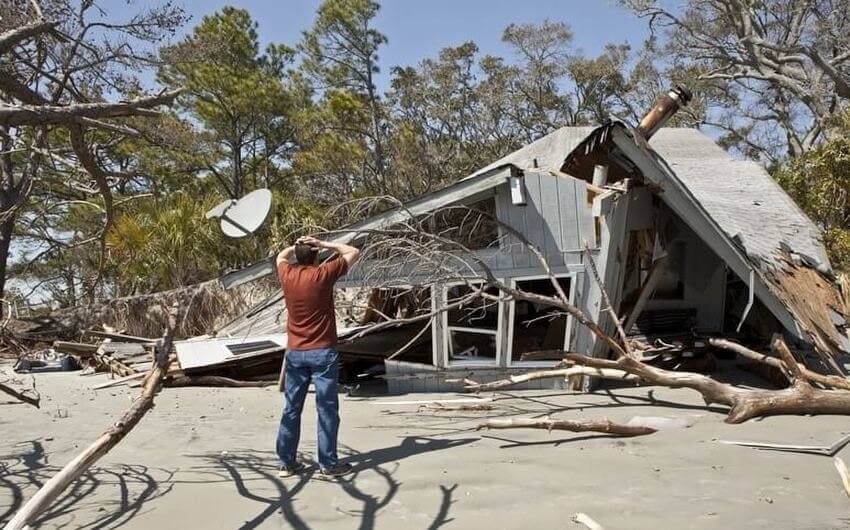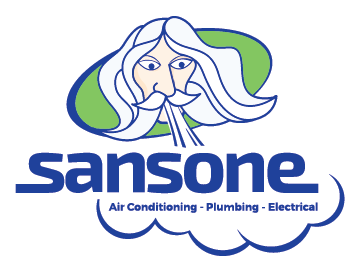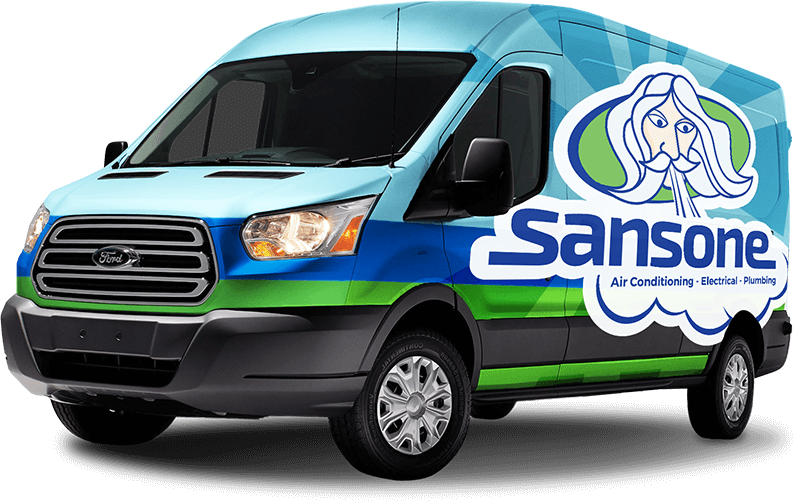
It’s that time of year again.
Just as us Floridians are letting out a sigh of relief now that summer is finally here, it’s time for hurricane season!
Hurricane season begins June 1st and runs through November in Florida, so we wanted to take the time to put together some trustworthy information on the proper way to prepare.
We’ve gathered the best information available and synthesized it into one handy guide, so be sure to share this one with your friends!
Stay safe and stay cool – from your friends The Sansones.
What Should You Do Before a Hurricane
Should I Stay or Should I Go?
Here’s the most important question every Floridian needs to be able to answer:
Do you live in an evacuation zone, or not?
If you hesitated at all in answering that question, keep reading. If a hurricane hits, you don’t want to be left guessing about this life saving piece of information!
Before a hurricane ever arrives, you should know whether or not you need to evacuate, under what conditions, where your hurricane evacuation routes are, and where you’ll stay.
So, do you live in an evacuation zone?
The easy to use Federal Alliance for Safe Homes guide has information on evacuation zones for every single state in the country and much more so be sure to bookmark the site.
To find out specific information about evacuation zones in your state click here and select your state. You’ll be taken to a website (this differs state to state) where you can then click on your county. Like magic, you’ll be able to find out if you need to evacuate, and more information on your hurricane evacuation routes.
Prepare Your Family
Preparing your family for a hurricane means putting together a disaster kit, and putting together a plan.
You don’t need to wait for a hurricane warning to start putting together your disaster kit.
When you’re putting together an emergency kit, you’re trying to plan for two situations: Remaining in your home after a disaster with limited utilities, or evacuating to a safer location.
The Federal Alliance for Safe Homes has a handy emergency supply resource you can reference here.
Bring this list to the store when you do your shopping, so you don’t skip out on anything crucial!
Part of having a disaster kit is checking it every few months to be sure the items are all still fresh. The easiest way to do this is if you set a calendar event on your phone to re-stock your disaster kit every year on June 1st. That way you’ll refresh your kit at the beginning of every hurricane season.
In addition to the top of mind items like food and water, you’ll want to think about how you can store important documents. It’s always good to have things like your family’s birth certificates and passports in your disaster kit, making it handy in case you need to leave quickly.
The Red Cross recommends grabbing social security cards, passports, birth certificates, insurance policies, or other important documentation and putting them inside of a plastic bag to keep them safe.
You can also snap photos of these documents on your phone! In the event of a real emergency, it can be helpful to have a digital backup of your documents.
Do you have any pets?
If it’s not safe for you, it’s not safe for them either!
You can also prepare a Pet Emergency Kit in advance, so you don’t get caught without supplies on short notice. The Red Cross has a helpful guide to creating an emergency kit for your pet here.
You should also create a disaster plan before you ever get a hurricane warning.
Doing the legwork and making these decisions in advance could be the difference between life and death for your family in the event of a storm surge.
The Red Cross has an incredible resource for creating a Family Disaster Plan here. You should involve your children when you’re filling out the Family Disaster Plan, and be sure to review the plan with them at the beginning of hurricane season, or whenever there is a hurricane warning.
The Federal Emergency Management Agency also has handy wallet-sized cards that you can fill out with emergency contact information. These are great for children to have as an easily available reference, in case they are separated from you during an emergency.
Have an Insurance Checkup
Whether you’re a renter or a homeowner, your insurance probably doesn’t cover flood damage.
Before a hurricane strikes, you should call and check with your insurance agency that your homeowner’s insurance plan covers enough for significant repairs to your home, potentially even enough to replace your entire home.
There are two great resources you should check out about insurance, in addition to contacting your insurance company directly:
The Federal Emergency Management Agency has a page full of accurate, up to date information on flooding here.
The Federal Alliance for Safe Homes also has an easy to use quiz to help you determine if you’re covered which you can access here.
When You Know a Hurricane is Coming
Prepare Your Home
There are a few simple things you can do to prepare your home when you know a hurricane is on the way.
You’ll want to ensure that your windows, roof, and home are protected.
There are a TON of different things you could do, but the National Weather Service has some effective and deceptively simple advice:
– Make sure your roof and walls are properly protected – consider getting a wind resistant cover.
– Use shutters, thick plywood, or wind resistant coverings to protect your windows.
– Trim tree branches beforehand.
– Gather yard items that could easily fly away, like bikes or table umbrellas. Either tie them down or bring them inside so they don’t become airborne.
– Cover your AC unit with plywood and turn it off during the storm to avoid damage.
The Federal Alliance for Safe Homes has a very detailed checklist about all of the various home-prep you should do before a storm – if you want something more comprehensive. Be sure to print one out and attach it to your emergency kit so that it’s easily accessible in the event of an emergency.
Do you need help with storm preparation?
The Federal Alliance for Safe Homes has a handy YouTube channel where you can learn how to use roof sheathing and tape, to secure your home, or how you can prepare for a hurricane over the weekend.
Prepare Yourself 24 Hours in Advance
The Department of Homeland Security has some helpful information on their Ready website about preparing for hurricanes.
If you know there’s a hurricane coming, the 24 hours before it hits are crucial.
Here’s what you should do 24 hours before a hurricane strikes:
– Make sure your car is in good working condition, has a full tank of gas, and is stocked with emergency supplies and a change of clothes.
– Review your disaster plan with everyone in your family – children included.
– Verbally discuss how you’ll get in touch with each other if you are separated, and if there is a power outage.
– Bring lightweight objects that could become projectiles (like bikes) inside.
– Secure larger patio furniture outside.
– Cover your home windows with wood, shutters, or metal.
– Bookmark your city’s relevant website or another website where you expect to get information about the hurricane.
– Charge your cell phone now, and keep at least one plugged in for the duration of the storm so you will have full power in the event of a power outage.
– Turn your refrigerator and freezer to the coldest setting, and keep a thermometer inside the fridge so you can tell if the interior gets hotter than 40°F.
You may also want to consider taking a photo of any valuables in your home at this time, while they’re still in one piece.
When you snap a picture on your phone it’s automatically time and date stamped, so having these photos could assist you in making claims later if your home is damaged.
Evacuate
If you live in an evacuation zone, you’ll want to evacuate in the 24 hours before the hurricane makes land.
Do you have pets or livestock? The Red Cross has some extra information on evacuating with animals that you should know about:
– Consider evacuating your large animals earlier than you think is necessary. Waiting until the last minute could be fatal for them, and dangerous for you.
– When possible, move livestock to higher ground.
– Bring companion animals indoors and maintain direct control of them. Be sure your pet evacuation kit is ready to go in case you need to leave quickly.
Preparing to Stay
Are you planning on staying put? If you are, here’s what The Red Cross wants you to know about staying home during a hurricane:
– If you’re planning on staying at home, let friends and family know where you are.
– Fill bathtubs and sinks with water, for flushing the toilet.
– Move furniture or valuables to higher floors of your home. You can consider covering sensitive clothing in garbage bags. You may want to photograph valuables too in case they become damaged.
– Turn off utilities if told to do so by the authorities. Note: If you shut off your gas, a professional is required to turn it back on.
Hopefully, your power won’t go out, but if it does then try to avoid opening your fridge as much as you can. When you keep the doors closed, the cold air stays put longer.
If your power goes out, then you should review this page from the CDC about food safety.
Any food that should be refrigerated like meat, eggs, and leftovers needs to be thrown out if it’s been warmer than 40°F inside of your fridge, for longer than two hours.
You can still cook frozen foods though, even if the food has already begun to thaw. Just use your thermometer to test the internal temperature and make sure that it’s still at or below 40°F.
Finally, when staying at home leave your home or building right away if you hear shifting or unusual noises. Strange noises could mean the structure is about to fall.
During and After the Hurricane
During
During the hurricane, it’s best to stay indoors if at all possible.
Walking outside is not safe during a hurricane.
Do not walk on beaches, riverbanks, or near other bodies of water. They could flood quickly with a lot of rain, and it only takes six inches of water to sweep you off your feet.
You’ll also want to stay away from underpasses, dips, low spots, canyons, and washes to avoid flooding.
Be prepared to turn off your utilities if you’re instructed to do so by authorities. (Note: If you turn your gas off, you will require a professional to help you turn it back on.)
If your power goes out while you’re home, try to use flashlights instead of candles. If something catches fire in your home, it will be very difficult for emergency services to reach you during a hurricane. If you have to use candles, never leave them unsupervised.
After
The most important thing is being careful after the storm.
While you’re trying to find your way home, be on the lookout for down power or loose power lines. Report them immediately to the power company if you come across any. The faster they can be removed from the road the safer everyone will be!
Do not drive through any floodwater. According to the CDC, you can’t tell how deep water is with your eyes. You never know how deep water is until you step in it, and it only takes a few inches of water to sweep a car away.
Do not touch floodwater. Flood water could have sewage or other contaminants in it. It’s best to avoid it, but if you do touch floodwater be sure to wash your hands immediately.
Stay out of any building that is surrounded by water.
When you get home, you can photograph any internal or external damage to help you when filing a claim.
The Red Cross has a handy guide on how to check your home’s structure and utilities to be sure that it’s safe for your family before re-entering. If you’ve left your home during the storm, it’s recommended to inspect the structure before entering after a natural disaster.
When you’re home, be sure to contact family members and let them know that you’re safe. The Department of Homeland Security urges you to send a text message rather than call. Texting is more reliable and often faster than making phone calls after a natural disaster because the phone lines are usually overloaded.
Repair Your AC After a Hurricane in Broward, Palm Beach, and St. Lucie Florida
You’ve done the most important thing already – by staying safe! Let us take care of the hard part. Call Sansone for any electrical or HVAC damage your home may have sustained during a hurricane, and we’ll get you up and running again.
Broward: (954) 800-2858
Palm Beach: (561) 701-8274
St. Lucie: (772) 879-5656

